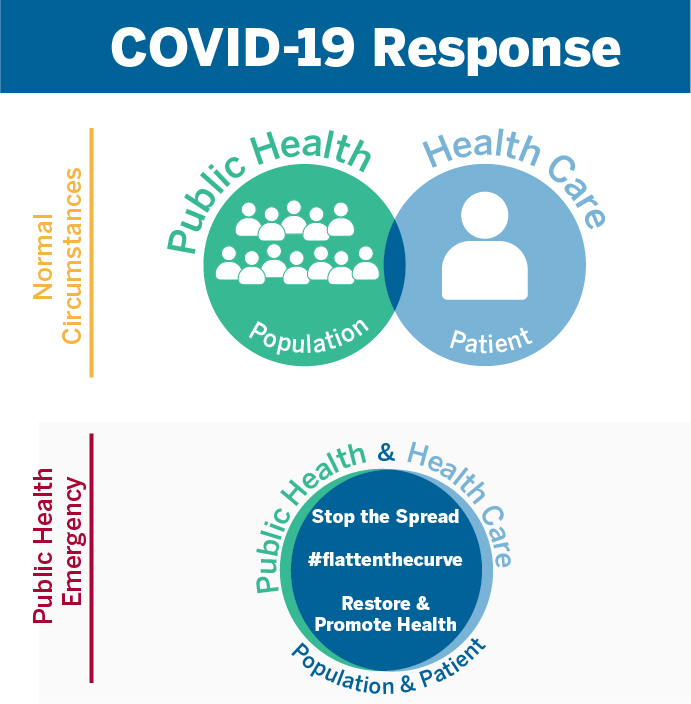
Public Health and Health Care
The public health and health care sectors are generally seen as “related but separate.” Public health emergencies, such as COVID-19, demonstrate how critical it is for public health and health care initiatives to be aligned and seen as integral parts of the larger system of health (Health System).
Public health and health care: How are they different?
The CDC defines public health as “the science of protecting and improving the health of people and their communities.”[1] Public health services include things such as public service announcements, health education campaigns, and monitoring population health statistics, like COVID infection rates. On the other hand, health care includes services aimed at improving or restoring the health of individuals, like diagnostic testing. The bottom line: public health is focused on POPULATION health and health care is focused on PATIENT health.
Public health and health care: How are they the same?
During a public health emergency, public health and health care can become practically indistinguishable. When an infectious disease is spreading, both public health (POPULATION) and health care (PATIENT) interventions are required to stop the spread, #flattenthecurve, treat the sick, and de-escalate the crisis.
Now let’s talk about the workforce.
We could separate the “health workforce” into the public health workforce (usually seen as epidemiologists, public health officials, etc.) and the health care workforce (physicians, nurses, dentists, etc.). But, in a time of crisis like COVID-19, both public health and health care professionals have the same end goal: restore and maintain the health of each person, and ultimately the health of the public overall. This workforce is on the #frontline of the response. But what about workforce shortages?
How are states ensuring a health care workforce response and addressing shortages?
They are creating plans to:
- Enhance portability of the health care workforce across state lines
- Use telehealth to screen patients and provide medical guidance
- Extend scope of practice for the duration of emergency orders
- Support effective delivery by hosting best practice guidelines for health care professionals on government websites
Research is ongoing to identify exactly what states are doing and how they are enacting these plans. Our team is working with the National Governors Association on a review of this, which we hope will inform state efforts.
[1] Source: Centers for Disease Control and Prevention. Available at: https://www.cdcfoundation.org/what-public-health
